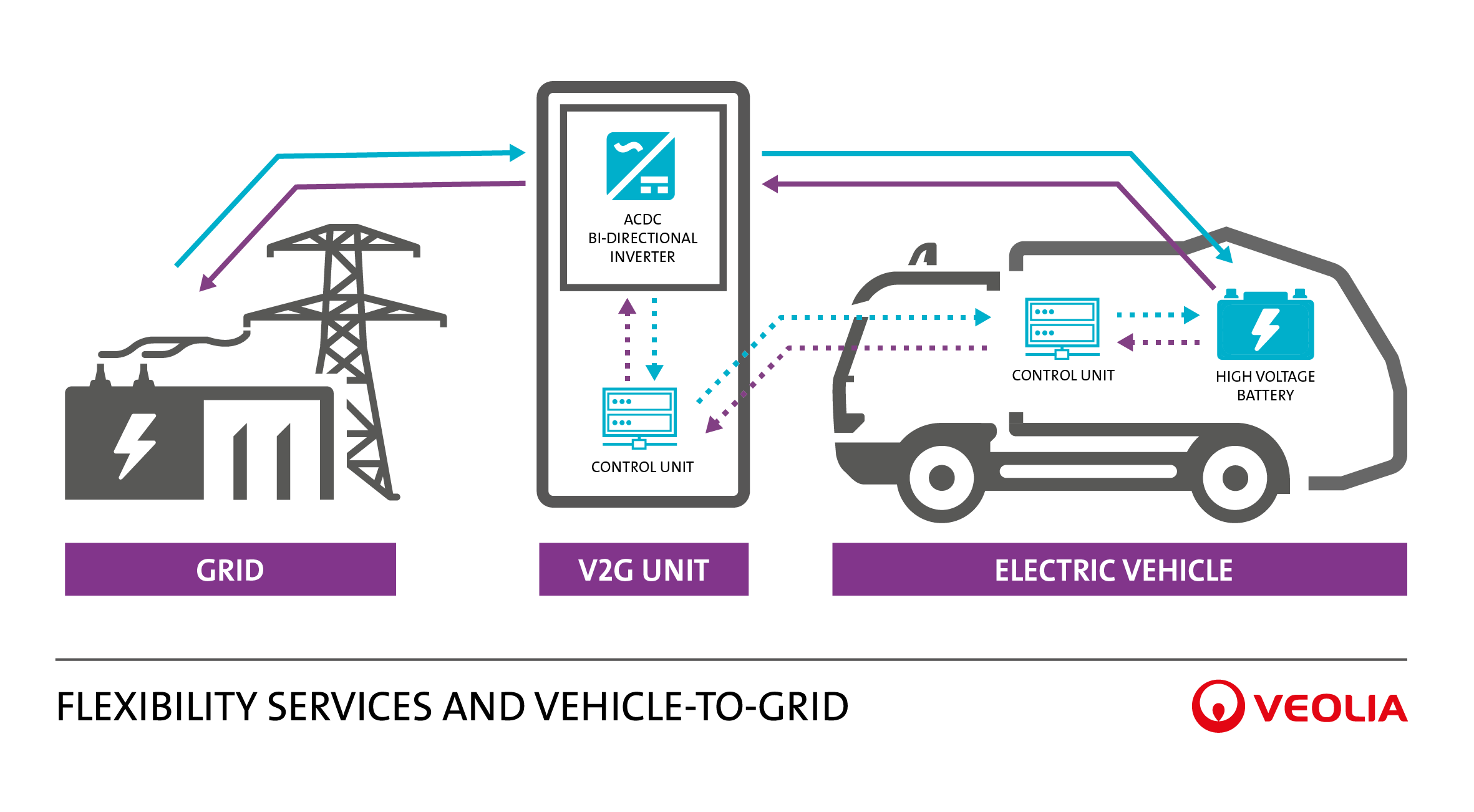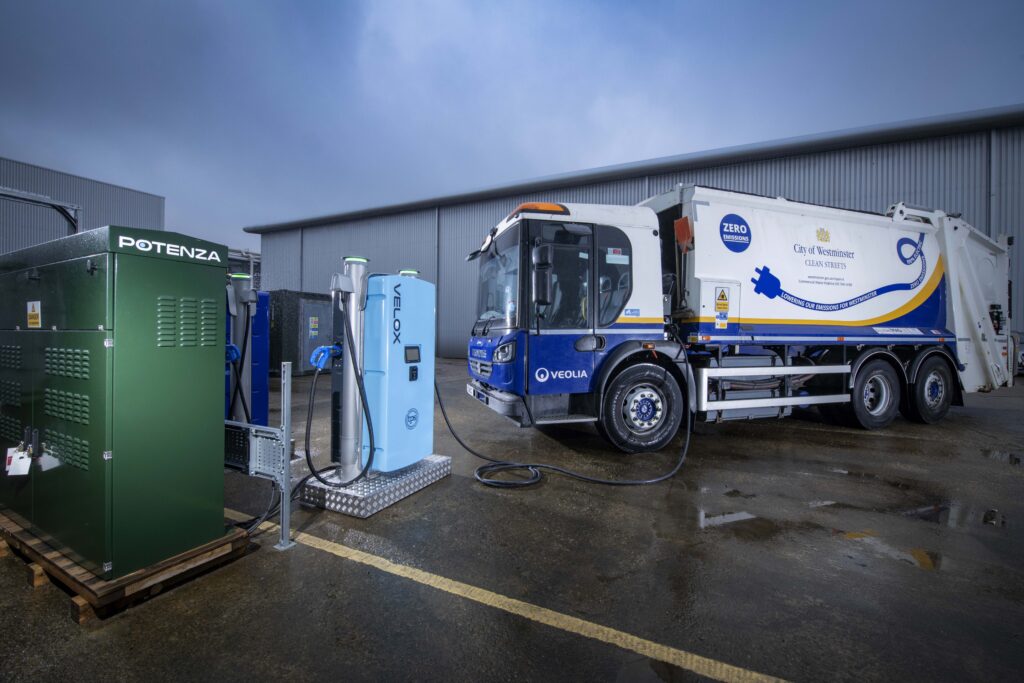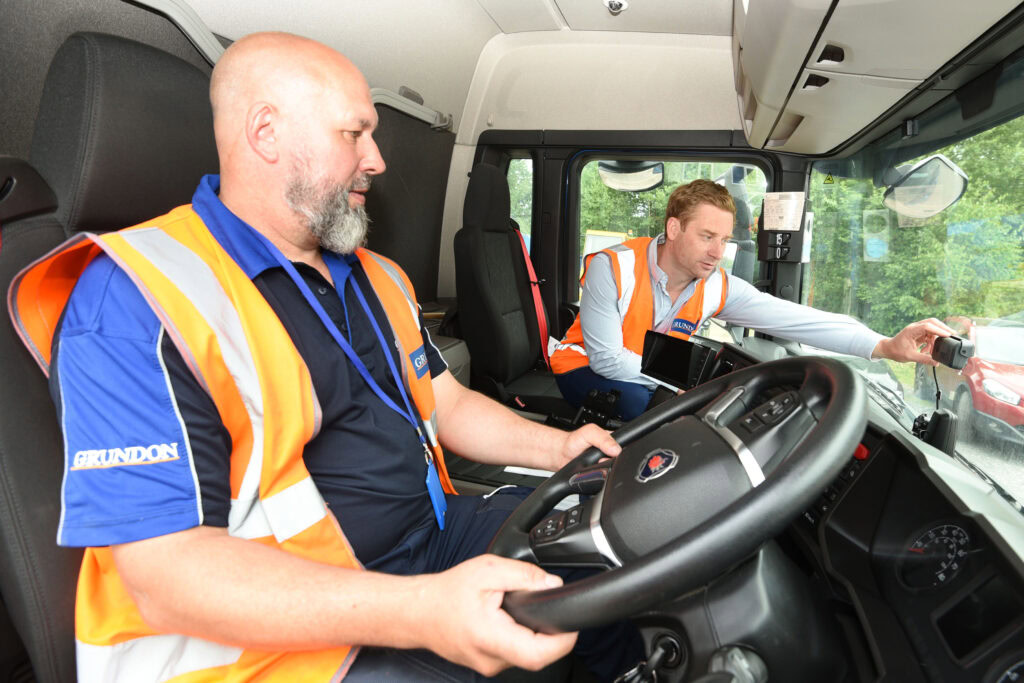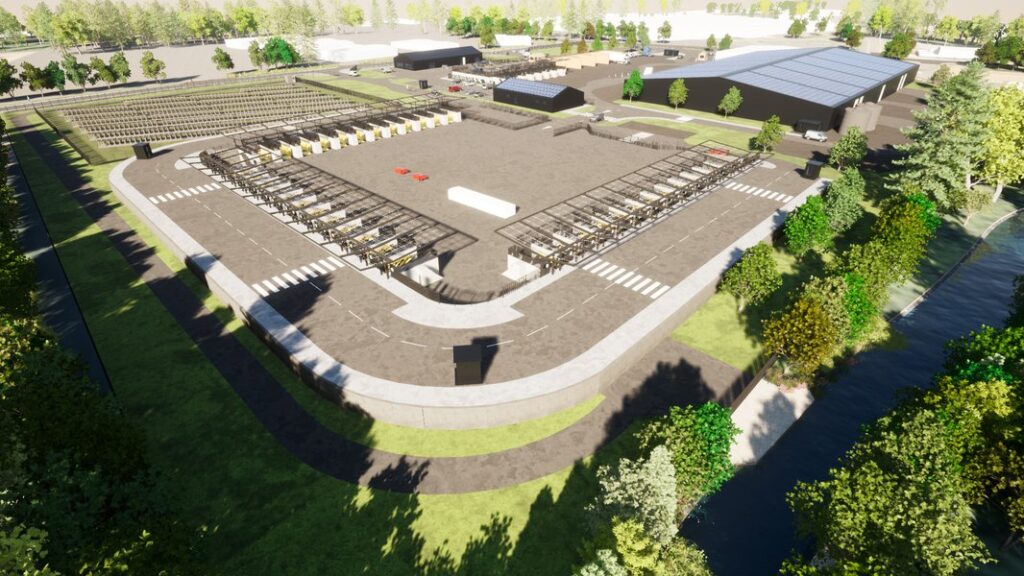The company, which says it is the largest waste collection fleet operator in the UK, has previously outlined plans to electrify all of its 1,800 refuse collection vehicles in the country by 2040.
As waste collection vehicles are usually parked at peak energy consumption times, the V2G technology would allow unused energy in the battery to be sold to the national grid and used.
Veolia said this can provide energy during peak demand periods, contribute to grid stability by regulating frequency and voltage, and even store excess renewable energy for later use.

Trial
The first phase of the trial performed by Veolia has now been “successfully completed”, enabling 110 KW of energy to be charged and discharged from two specially designed bi-directional vehicles, enough to supply power to 110 households for over two hours during peak evening hours.
Veolia said it now plans to expand the trial and test it out on the streets, using Westminster council collection vehicles to pilot the innovation.
If rolled out to all of its fleet by 2040, Veolia said this will enable the company to provide to the grid around 200 MW of flexible power capacity daily, an equivalent of the evening peak energy demand of over 150,000 homes.
Estelle Brachlianoff, chief executive of Veolia, said: “We need to innovate in local decarbonizing energy and transform our traditional approaches to take advantage of untapped sources. This requires a change of mindset and a collective willingness to rethink the way we produce, distribute and consume energy.
“The success of the V2G demonstration illustrates this perfectly. By enabling electric vehicles to become active players in the power grid, we are harnessing their potential to balance energy supply and demand, reduce carbon emissions and promote renewable energy”.
Vehicles
The waste management company added that it has taken the potential of V2G technology to a new level by applying it to collection vehicles, which are “ideally suited as their batteries are six times larger than those in an average car, and the fleet is usually parked at peak energy consumption times for the National Grid”.
In addition, Veolia said it will “maximise the use of local decarbonising energy from its waste-to-energy plants to power its vehicles, creating a perfect circular loop”. This will include the Landmann Way vehicle depot in North London, powered by electricity from its SELCHP plant in Bermondsey.
Gavin Graveson, senior executive vice president for Veolia Northern Europe Zone, said: “Flexibility is the key to super-charging the UK’s energy security and the transition to a smarter and more sustainable market.
“We have to adapt to increasing energy demand and adopt smarter energy systems to bring resilient, dependable and low carbon energy to our homes and businesses. Flexibility innovations like this one have the potential to revolutionise the way we manage our energy usage and represent a huge opportunity to cut costs and carbon”.
Partners
For this project Veolia has partnered with electric vehicle charger manufacturer, Turbo Power Systems (TPS), vehicle repower experts Magnetic Systems Technology (Magtec) and EV charge point management software provider Fuuse, with support from technology provider, Advantics.












Subscribe for free